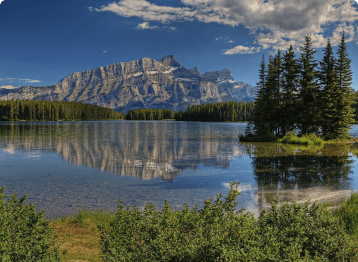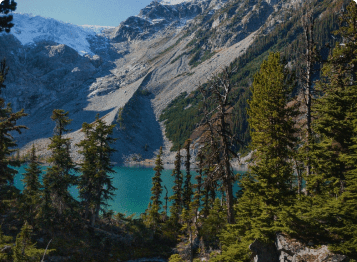Better operations
As a socially responsible ESG focused organization, involved in Emission Mitigation and large-scale reforestation through sustainable renewable energy creation, ICE are uniquely positioned to help in the challenge of climate change.
The team at ICE have world leading experience, knowledge and technological expertise in this area and have worked tirelessly to identify and deliver synergistic solutions for forestry owners and operators with responsibility for forestry management to; wildfire, disease, pest damage and waste/residual removal, recycling, and emission mitigation.
The forestry and harvesting/processing waste and residuals, created in the millions of tonnes per annum are typically burned in place or in the past have been land-filled for many years as an alternative such as ICE has simply not allowed them an alternative.
The Canadian forestry sector is among the most environmentally responsible, regulated, and professional in the world today. We have received the full support of our forestry sector partners in developing this better way forward allowing non-merchantable, low/no value fibre in their waste streams to become an economic by-product whilst reducing very dramatically the emissions which, without the presence of ICE would continue to need to be dealt with in less optimal ways.
ICE have identified large-scale, sustainable, long-term feedstock opportunities, blue chip industry partners and have strong governmental support.
ICE are ready, to construct and implement newly developed technologies, in a synergistic way with existing forestry and logistic operations and infrastructure introducing the first, of five, Waste Fibre Recycling ICE Plants, the first of which will be located in northern Alberta, Canada, beginning full production in 2024.
This initiative will create the ability for managers of Crown Forestry, in Alberta, to change the way they manage and view the environmental and reforestation challenges of their vast forests, in line with today’s environmental demands, allowing operational and economic challenges they face today to be mitigated for the long term into the future.
Not a single additional living tree will be cut due to the arrival of ICE. Indeed, millions more healthy trees will be planted in areas where due to the sheer scale of damage and cost to remediate, there would simply have been dead standing timber as far as the eye can see; without any possibility to reforest the same. Add to this the reduction of in place burning of forestry residuals from ongoing forestry activities and the world will be a much better place for our efforts.
Up to a further 4 ICE Plants will be introduced, directly on railway infrastructure, close to major forestry operations and forestry areas which have been affected by major wildfires in the past and where production waste and harvesting residuals present a large-scale problem for the sector today.
In Alberta our focus is on the remediation of wildfire damaged stands which have not and will not otherwise be reforested due to the lack, until now, of an economically viable use for ‘unmerchantable’ dead or seriously damaged timber.
The very significant volumes of Waste and Residual fibre burned each year, create a huge amount of GHG and Particulate Emissions affecting not only the local population and environment but those much further afield.
ICE will recycle several millions of tonnes of this material each year, as plants are rolled out, avoiding much of the harmful emissions, and locking in GHGs, whilst creating jobs, removing waste piles blocking replanting from otherwise productive timberlands, allowing for significant reforestation and the sequestration of further CO2 which comes with that benefit for the long term.
With almost no lower quality threshold for the type of waste and damaged fibre that we can handle at ICE, our plants will become a repository for industrial, demolition and other waste wood and fibre materials including legacy waste piles and fibrous materials from existing landfill and dumps, again cleaning the environment, and protecting in this case water courses, aquifers and land where these dumps are located.
We will work with academic institutions to measure and report furthermore the return of wildlife to forestry areas where we are able to remediate and reforest wildfire damaged timberlands, this information will be shared publicly, and we are excited to make a difference to both the flora and fauna of Northern Alberta over the decades to come.
This program will be fully supported and staffed by our Indigenous Partners, Metis and First Nations whose livelihoods and traditions are most affected by the aftermath of natural disasters on their traditional lands.
 AlbertaALBERTA In all of Canada, there is only one Metis group with their own land base. Shared between 8 separate ‘Metis Settlements’ and located throughout…
AlbertaALBERTA In all of Canada, there is only one Metis group with their own land base. Shared between 8 separate ‘Metis Settlements’ and located throughout… British ColumbiaBritish Columbia From the continued rise in forest fires and the damage caused by the Mountain Pine Beetle, RMDE is facilitating the recovery of British…
British ColumbiaBritish Columbia From the continued rise in forest fires and the damage caused by the Mountain Pine Beetle, RMDE is facilitating the recovery of British…

